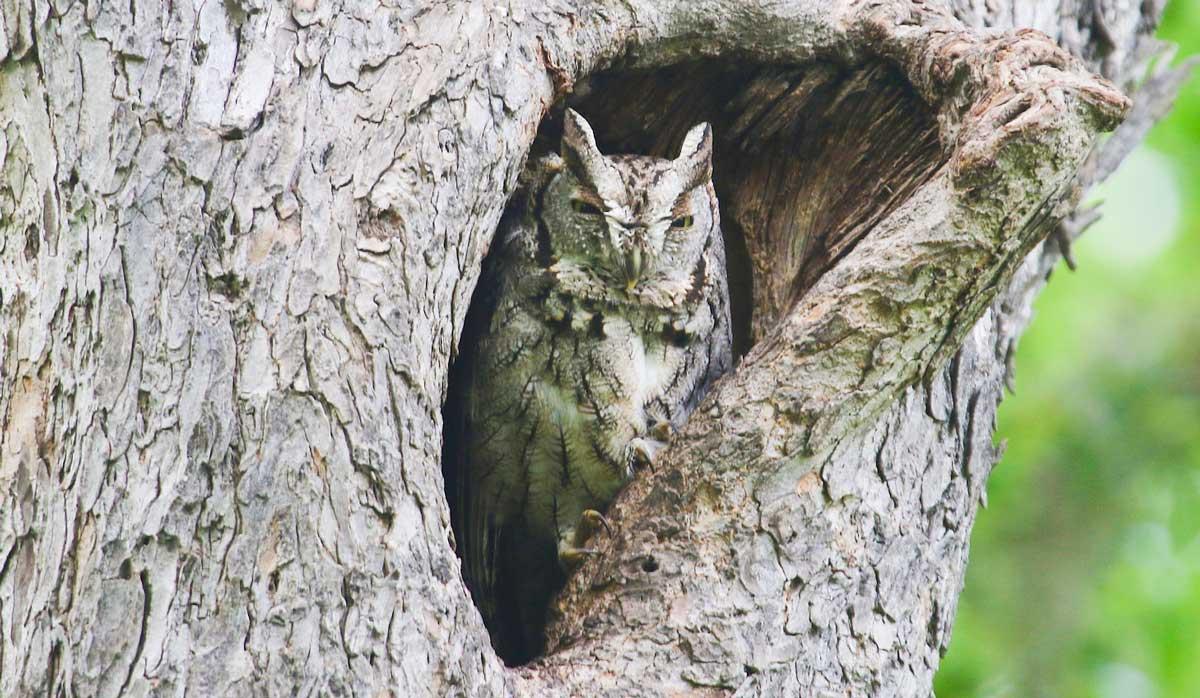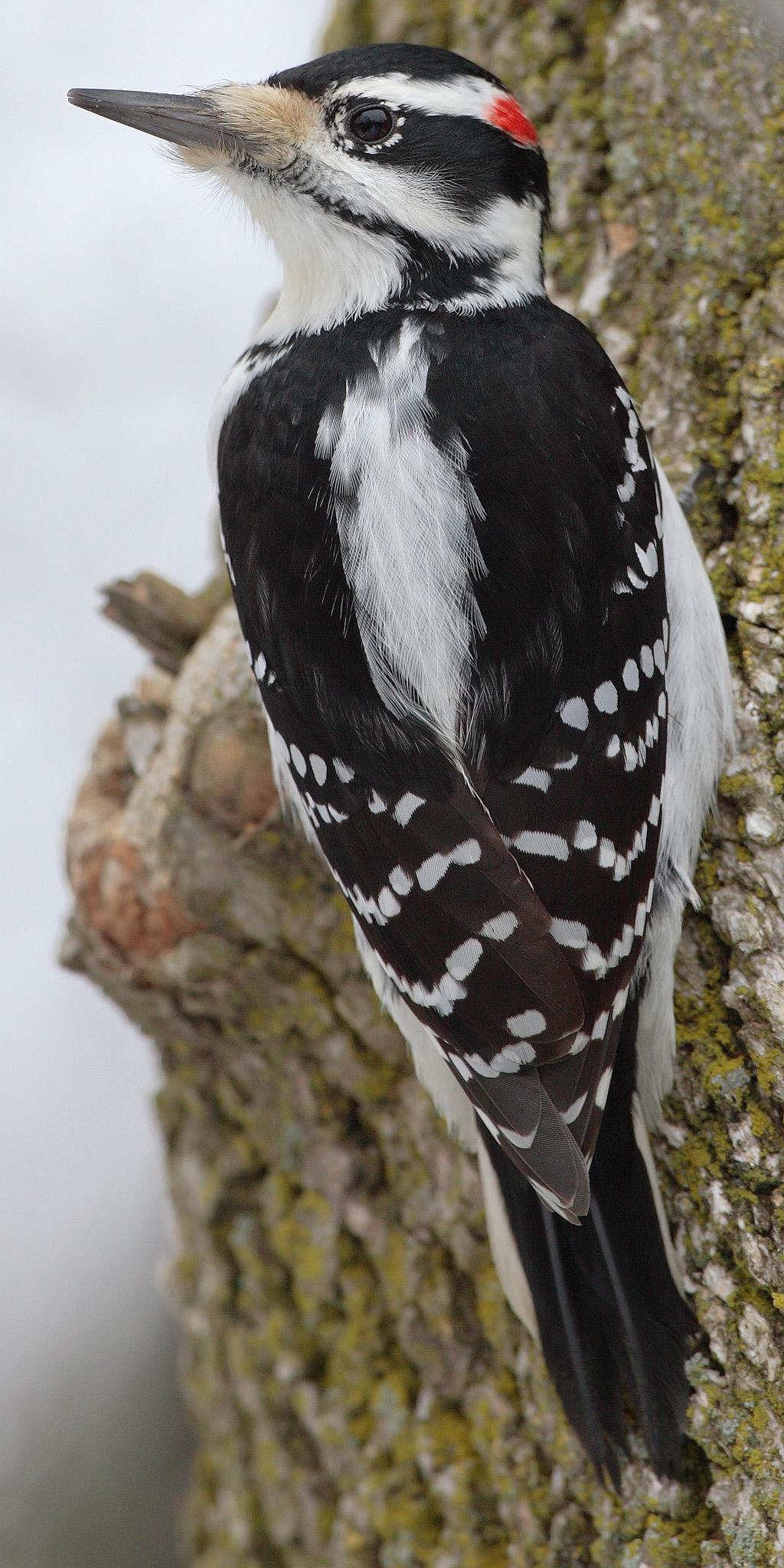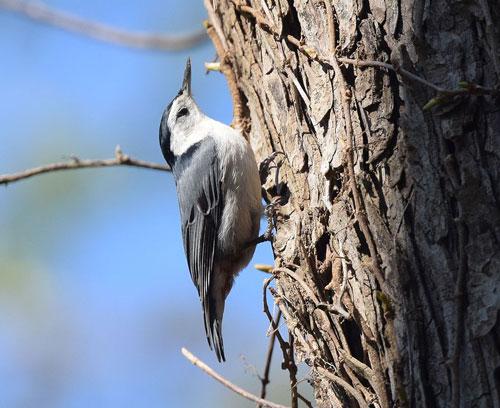Tree Cavities are for the Birds
By Josie Miller

Have you ever noticed a tree with a hole or cavity, dead branches, or even a dead tree and thought, “Time to call an arborist”? Before the saw comes out, consider the contributions that these trees make for wildlife. What often appears to us to be a defect in a tree may actually be shelter for a bird, mammal, reptile, or amphibian. Tree cavities create safe places for sleeping, raising young, protection from predators, and a dry, insulated shelter in which to minimize heat loss during rain and cold temperatures. Dead limbs and trees are often fruitful places for hungry birds to search for insects, as well as excellent structures for woodpeckers to excavate their next nesting cavity.
Many woodpeckers are known as primary cavity excavators, meaning they are able to chisel a cavity in wood that appears intact. In most species, both females and males participate in excavating the cavities to be used for incubating eggs and raising young. Downy, hairy, red-bellied, red-headed, and pileated woodpeckers, as well as northern flickers all excavate nest cavities in dead trees or on dead limbs of live trees. Red-bellied woodpeckers and northern flickers may also use nest boxes. Downy woodpeckers often surround the cavity entrance with fungus or lichen in an effort to hide the site. The eggs of all of these birds are white, as they do not require camouflage.

Hairy woodpecker (Leuconotopicus villosus)
Secondary cavity nesters refer to birds that use existing cavities for nesting. Some of these birds may be able to further excavate a knothole or decaying cavity in dead wood, but most are dependent on abandoned woodpecker holes. Many of these birds will also nest in the artificial cavities of human-built birdhouses. Oftentimes birds construct nests within the cavities that may include such materials as twigs, leaves, weeds, bark, feathers, snakeskin, animal fur, and human hair. If you have cavities in your trees, be on the lookout for these cavity-nesting birds:
- Eastern screech-owls, who are about the size of a robin, prefer abandoned flicker cavities, but will also inhabit natural hollows and birdhouses for year-round roosting.
- In competition for the same sites, our smallest falcon, the American Kestrel nests in similar cavities.
- Tree swallows and eastern bluebirds, who traditionally nest in natural tree hollows and old woodpecker holes, but are often displaced by aggressive introduced species such as European starlings and house sparrows, have benefited greatly from nest box campaigns such as “bluebird trails.”
- Tufted titmice, who typically nest in abandoned woodpecker or other natural cavities, will also sometimes nest in artificial bluebird boxes, particularly when they are located in the forest interior.
- Purple Martins, who once nested colonially in dead trees riddled with woodpecker holes now nest almost exclusively in human-provided nest boxes and gourds.
- Carolina and house wrens both nest in just about any cavity, including natural hollows, old woodpecker holes, nest boxes, flowerpots, and shoes.
- Besides using natural cavities and abandoned woodpecker cavities, Carolina chickadees and white-breasted nuthatches will both sometimes enlarge or excavate their own nest cavities by removing bits of rotted wood. White-breasted nuthatches will also use a crushed insect held in the bill to sweep the inside and outside of the nest, using the chemical secretions to repel predators

White-breasted nuthatch (Sitta carolinensis)
In many urban and suburban environments, dead branches and trees, as well as limbs with cavities are often removed without consideration for the important role they play for our wildlife. When possible, consider leaving dead branches on living trees, or even a dead standing or fallen tree. A qualified Tree Risk Assessor can help to determine whether these pose a risk so we can all leave more trees for the birds.
Photography
1. Eastern screech owl, Gregory "Slobirdr" Smith, Flickr
2. Hairy woodpecker (Leuconotopicus villosus), Mdf, Wikimedia Commons
3. White-breasted nuthatch, Chrissy McClarren & Andy Raego, Wikimedia Commons
About the author
Josie Miller is the Stewardship Director at Floracliff Nature Sanctuary, a 287-acre forest and ecological preserve in the palisades region of the Kentucky River in southern Fayette County, Kentucky. Email @ josiekmiller@gmail.com
